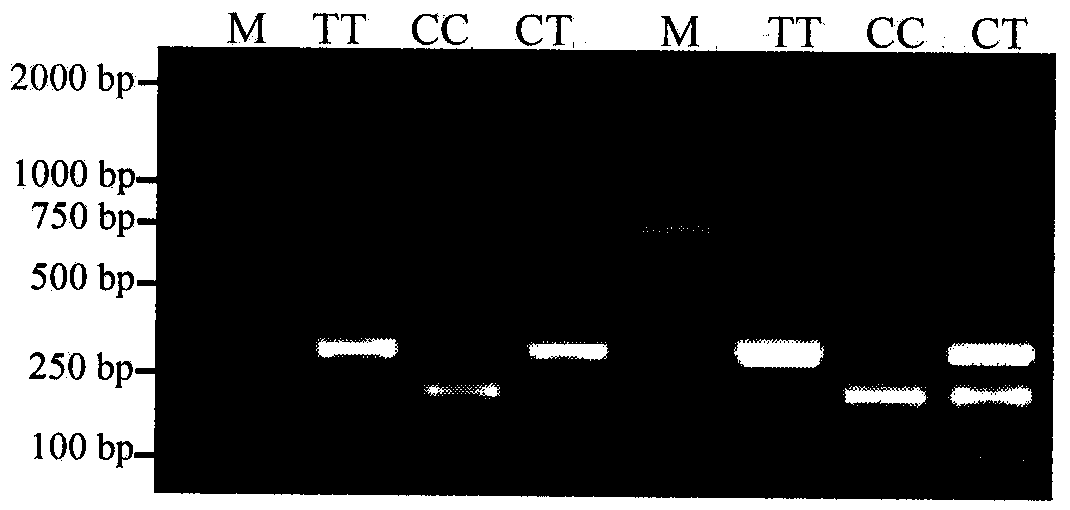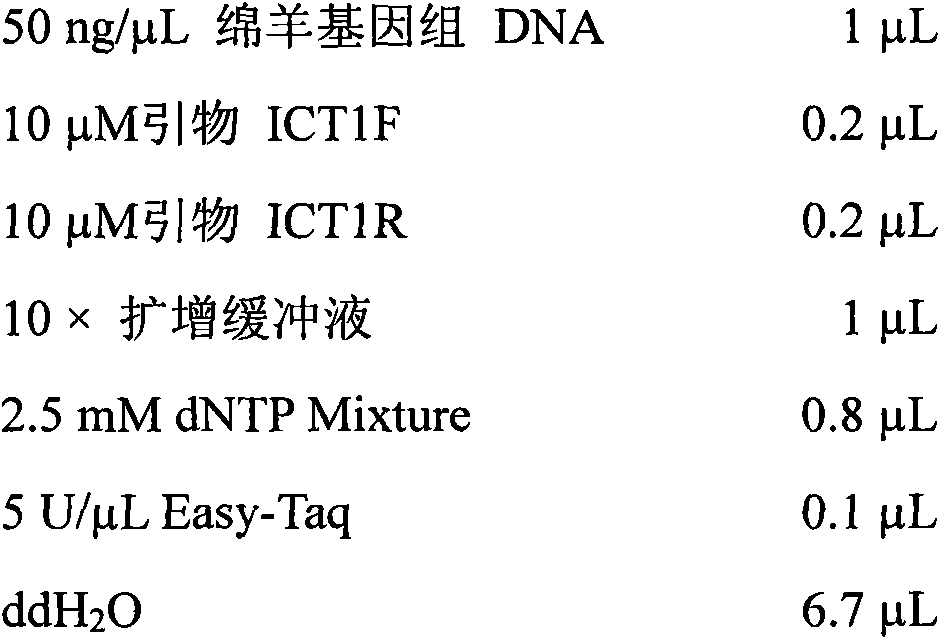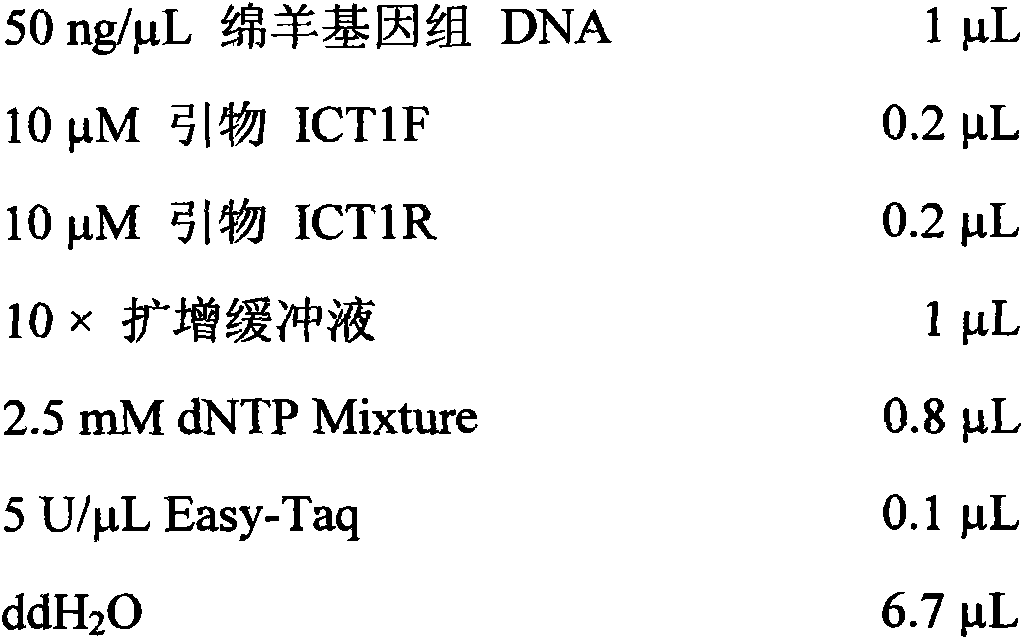Molecular marker method and primer pair for predicting and identifying sheep wool fineness
A technology of molecular markers and primer pairs, applied in the field of animal molecular genetics, to achieve the effects of low cost, accelerated breeding process, and high accuracy
- Summary
- Abstract
- Description
- Claims
- Application Information
AI Technical Summary
Problems solved by technology
Method used
Image
Examples
Embodiment 1
[0033] Obtaining Genomic DNA of Chinese Merino Sheep
[0034] The sheep ear tissues were collected and stored at -20°C for future use. The sheep genomic DNA was extracted by conventional phenol / chloroform method. The specific method is as follows:
[0035] (1) Take 5 g of ear tissue from Chinese Merino sheep (Xinjiang Army Reclamation type), remove the connective tissue, clean and disinfect the tissue block with 70% alcohol, put it in an Eppendorf tube, cut it with scissors, or grind it to pieces;
[0036] (2) After the alcohol in the Eppendorf tube is completely evaporated, add 700 μL of separation buffer, suspend the chopped tissue, add 5.0 μL of proteinase K (20 mg / mL), and act at 55 ° C for 8-12 hours until there are no tissue pieces;
[0037] (3) Take out the digested tissue fluid, add an equal amount of saturated phenol in the tissue fluid, mix for 10 minutes, centrifuge at 12,000 r / m at 4°C for 10 minutes;
[0038] (4) Take the supernatant, add the same amount of phe...
Embodiment 2
[0044] Obtaining of Digestion Product of Sheep ICT1 Gene
[0045] Design a pair of primers ICT1F and ICT1R according to the ICT1 gene C55420707T site in the sheep genome, and then perform PCR amplification on the sheep genome DNA to obtain the PCR amplification product, and then use the endonuclease Ban II to digest the PCR amplification product to obtain the enzyme cutting products, such as figure 1 shown.
[0046] The primer sequences are as follows:
[0047] ICT1F: 5'-AGTTCACACAGGACAGGAGCG-3'
[0048] ICT1R: 5'-CTGCAGAGAAGAGGTTTCAAAGAG-3'.
[0049] The PCR amplification system is as follows:
[0050]
[0051]The PCR amplification conditions were as follows: 94°C pre-denaturation for 5 min, 94°C denaturation for 30 s, 65°C annealing for 25 s, 72°C extension for 30 s, a total of 36 cycles, and 72°C final extension for 10 min.
[0052] The enzyme digestion reaction system is as follows:
[0053] 10×CutSmart Buffer 1μL
[0054] Endonuclease Ban II 1μL
[0055] PCR pr...
Embodiment 3
[0058] Determination of ICT1 Genotype in Sheep
[0059] Use agarose gel with a concentration of 2% to 3% to carry out electrophoresis separation of the digested products in Example 1, and determine the genotype according to the results of the electrophoresis separation. The criteria for determination: (1) electrophoresis presents two bands, the size of which is 249bp and 89bp, when the C55420707T site in the fifth exon region of the sheep ICT1 gene is not mutated, the PCR amplification product can be completely cut by Ban II enzyme, and it is named CC genotype; (2) Electrophoresis shows a band, If the size is 338bp, when the C55420707T site in the 5th exon region of the sheep ICT1 gene is mutated, the PCR amplification product cannot be digested by Ban II, and it is named as the TT genotype; (3) Electrophoresis shows three bands with a size of 338bp , 249bp and 89bp, the C55420707T site in the fifth exon region of the sheep ICT1 gene is in a heterozygous state, and the PCR amp...
PUM
 Login to View More
Login to View More Abstract
Description
Claims
Application Information
 Login to View More
Login to View More - R&D
- Intellectual Property
- Life Sciences
- Materials
- Tech Scout
- Unparalleled Data Quality
- Higher Quality Content
- 60% Fewer Hallucinations
Browse by: Latest US Patents, China's latest patents, Technical Efficacy Thesaurus, Application Domain, Technology Topic, Popular Technical Reports.
© 2025 PatSnap. All rights reserved.Legal|Privacy policy|Modern Slavery Act Transparency Statement|Sitemap|About US| Contact US: help@patsnap.com



